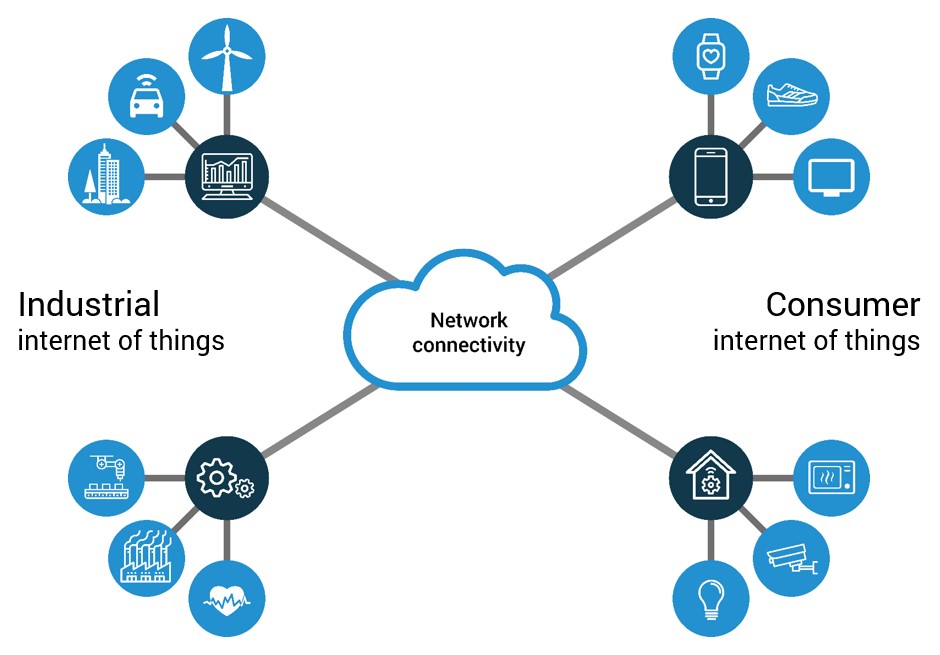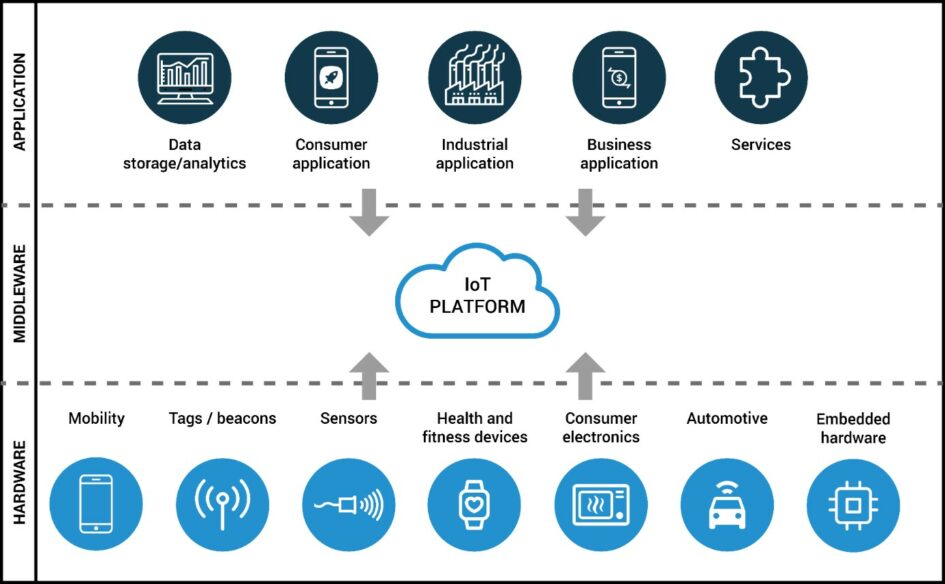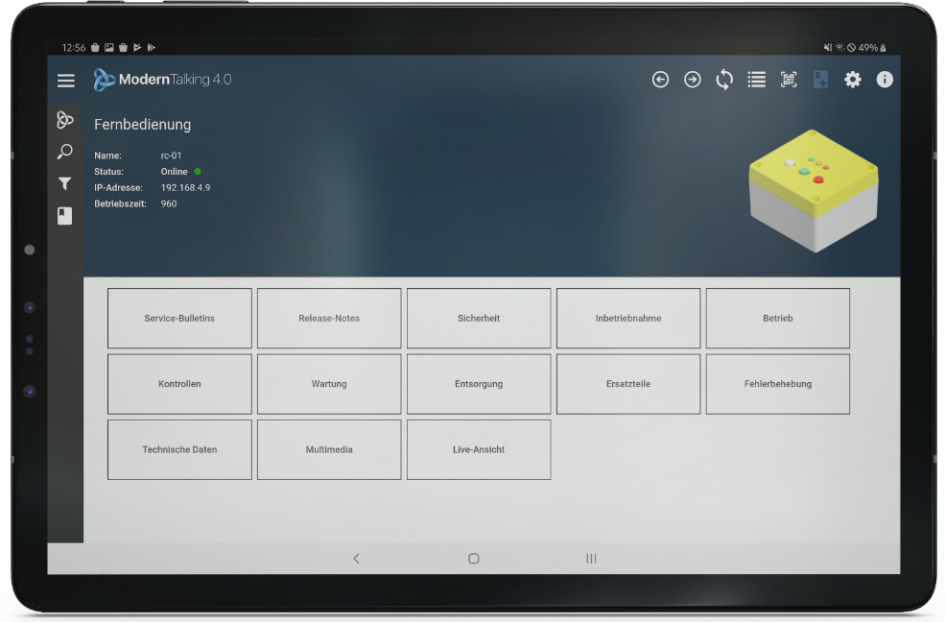Modern Talking 4.0 – the Internet of Things and intelligent information
I announced it earlier and now the secret is out. So what was the topic of my presentation at the annual conference and what were all those mysterious components? The Internet of Things, of course. That much you knew already. But what has it got to do with intelligent content, exactly? Where is technical documentation headed? These are precisely the questions I am about to answer.

It’s that buzzword again, the Internet of Things. But just between ourselves: it hasn’t been that for ages, it has become ordinary. We have voice assistants to control our music systems, smart homes, shopping or televisions. If we are not using voice assistants, we take the somewhat old-fashioned approach instead and tap away busily on our smartphones. We follow bus and taxi routes live, or just book an electric scooter or check out all the traffic jams on Google Maps. Things found their way onto the internet – a very long time ago.
What is the Internet of Things?
But let us quickly start all over again. The Internet of Things, or IoT for short, describes the connectivity of everyday objects, or in an industrial context, machines, via the internet. All the things in the network have a unique identity, a certain intelligence and can communicate, interact or cooperate with other things. These digital images of things in the network can control their real counterparts from virtually anywhere by means of an app or by using a browser.
The Internet of Things is divided into two sections: the Industrial IoT and the Consumer IoT. The difference lies not in how they work, but in the focus of the technologies. Generally speaking, the CIoT is more about the interaction of people with smart devices, whereas the IIoT focuses more intently on communication between devices (control and monitoring in smart factories, compliance with automated processes, etc.). But where maintenance is concerned, for example, the IIoT also needs to interact with people.
Something that is more commonly found in the CIoT. Smart automatic feeders, pill boxes, clinical thermometers, temperature controllers, coffee machines, voice assistants, even smart socks, are all real attempts to establish greater connectivity between people and their stuff. Not only are things then used more efficiently, they can also be automated (smart homes, for example).
What is the point of the Internet of Things?
Whether IIoT or CIoT: the Internet of Things helps to increase efficiency. This can be efficiency in terms of time, cost or energy. Automation always includes these factors. Automation also gives things such as predictive maintenance the opportunity to minimise faults and thus make more sustained use of things. Smart things are also safer to operate and can help protect life and limb in intelligent security systems in smart homes. The applications and possibilities in the IoT are really so diverse that it is almost impossible to list the advantages in full.
What does the Internet of Things have to do with intelligent information?
According to Ferry Vermeulen and the tcworld Intelligent Information blog, intelligent content is designed for automation and includes content components that can be mixed and matched. The content must be fully independent, to allow it to be shown in different contexts. Intelligent information is therefore scalable and can be used efficiently and independently in processes by both people and technologies. But the aspect of intelligent content that certainly needs highlighting is the fact that it can be personalised. This means that the right content can be delivered to the right person at the right time, regardless of the device.
The technology employs so-called facet filters, which use metadata such as profile, location, information type, subassembly and search term to filter out the exact information required from a mass of individual, independent data items.
And now finally, the context: In the IoT environment, data exchanged between hardware and the knowledge derived from smart devices can be used to filter and deliver intelligent information, or to calculate navigation paths and quantities of information (MicroDocs). Using the data collected by smart devices, the exact information needed for maintenance, for example, can be displayed to a user automatically. In the IIoT environment, this would mean that machines send error codes to one another and automatically provide people with related instructions. There is further potential with regard to predictive maintenance, making it easier for on-site service engineers to identify the existing quality of individual components and keep the level of quality consistently high. If machines are aware of and communicate their own state, maintenance can be more targeted, more easily planned and more efficient. It will be carried out in good time and there is no need to find the instructions first. The machine was already aware of a specific problem.
At the tekom annual conference, I had with me a few home-made “things” that could have belonged to heavy machinery in an industrial environment. This included signal lights to indicate a malfunction, an RFID reader to identify the user, and a great deal more. I also brought along my own “internet”, so that the components could communicate with one another and with the Content Delivery App (a heavily adapted version of SCHEMA Reader), which was specifically designed for the purpose. All these things, together with their states, could be seen on the network via the app. Once distributed among the audience, it became possible to interact with the devices I had brought with me. By using the app, we could follow live how the states changed when buttons were pressed and how the things exchanged information. A person would enter error codes in one component, which would then communicate them to the other components. After a button was pressed on an independent component, a signal light showed red and, at the same time, the next thing generated a QR code leading to a website showing the error code as a placeholder. However, it would be possible for instructions relating specifically to this error code to be placed there. A tangible example of technical documentation in the Internet of Things.
Summary
Intelligent information is the order of the day in technical writing. It is already present in every component content management system for efficient variant management or content delivery. So the leap to the Internet of Things is not really that big and brings with it many long-term advantages for the users and operators of machines. With the IoT, intelligent information is automatically exchanged between man and machine. The subject really does have the potential to provide the most elegant interpretation of the maxim “the right information at the right time in the right place”.
Other articles from Quanos
This might also interest you

„Doku-Lounge“: Auf dem roten Sofa mit Kerstin Berke und Philipp Eng
Moderatorin Kerstin Berke und Marketingspezialist Philipp Eng sind das Duo vor und hinter dem Mikro der „Doku-Lounge“…


